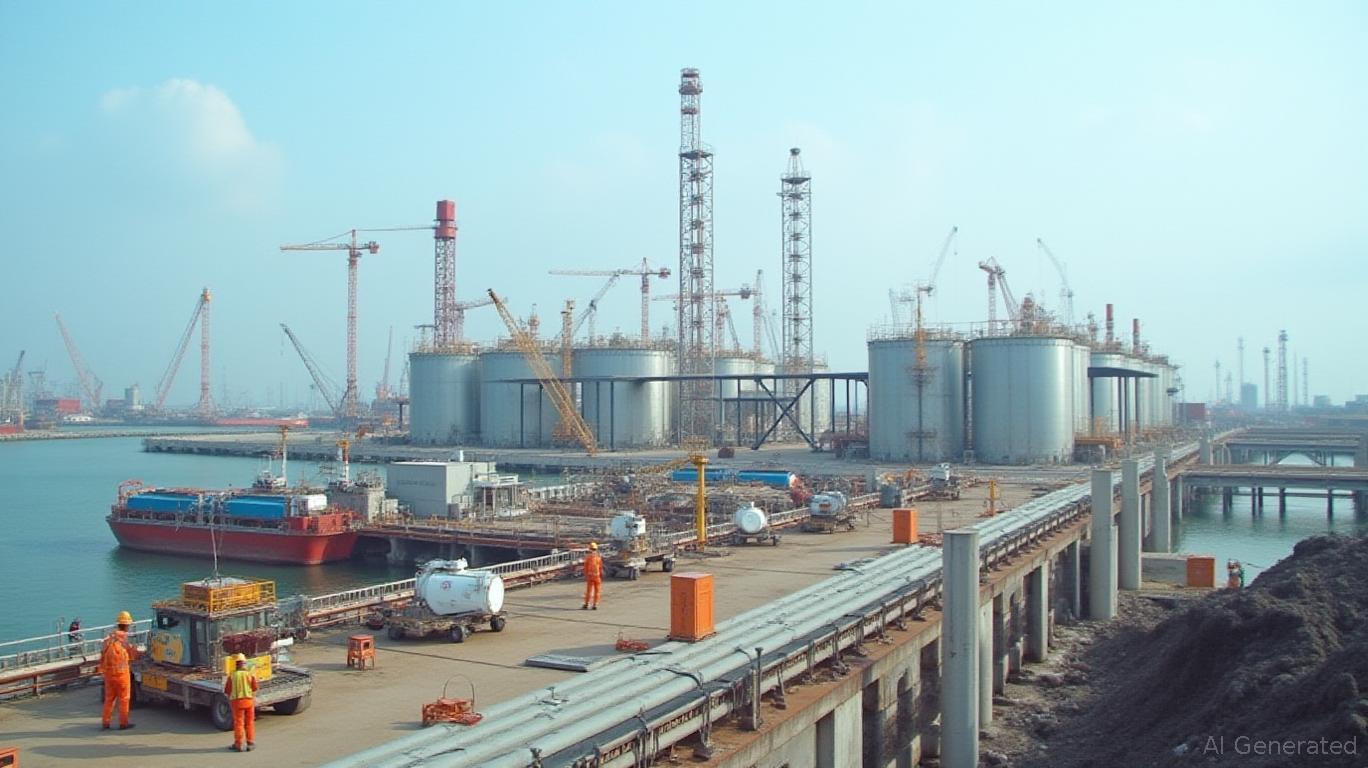AVTL's Pipavav Ammonia Terminal: A Catalyst for India's Green Energy Transition and Export Ambitions
India's journey toward energy independence and net-zero emissions hinges on infrastructure that bridges domestic demand and global decarbonization trends. AVTL's new ammonia terminal in Pipavav, Gujarat, emerges as a pivotal asset in this transition, positioned to serve dual roles: stabilizing fertilizer supply for agriculture and enabling India's emergence as a green ammonia exporter. Backed by Vopak's terminal expertise and funded by AVTL's recent IPO, this project underscores the convergence of strategic infrastructure and environmental ambition. Here's why investors should take notice.
The Terminal's Strategic Dual Mandate
The Pipavav ammonia terminal, with a capacity of 36,000 metric tons, is designed to address two critical challenges. Domestically, it will import ammonia for India's fertilizer sector, which accounts for over 80% of global ammonia consumption. With domestic production struggling to meet demand due to rising energy costs and regulatory hurdles, this terminal ensures stable supply to farmers, a cornerstone of India's economy.
Internationally, the terminal positions
as a gateway for green ammonia exports. Green ammonia—produced using renewable energy and hydrogen—has emerged as a critical vector for the global energy transition. It is seen as a carbon-neutral fuel for industries like shipping, steelmaking, and power generation. India's abundant solar and wind resources, coupled with falling renewable energy costs, make it ideally suited to produce green ammonia at scale. The Pipavav terminal, strategically located near major ports, will facilitate this shift by enabling low-cost storage and export logistics.
Vopak's Role and IPO-Driven Capital: Building a Sustainable Moat
AVTL's partnership with Vopak, a global leader in energy infrastructure, is a key differentiator. Vopak's 42.23% stake reflects its confidence in AVTL's execution capabilities and the terminal's alignment with its own hydrogen/ammonia growth strategy. The Dutch firm's technical expertise in terminal design, safety protocols, and global supply chain networks will be critical to the project's success.
The recent IPO, which raised INR 2,800 crore (EUR 290 million), has further strengthened AVTL's financial footing. While reducing Vopak's stake slightly, the funds allowed AVTL to retire debt, acquire a Mangalore LPG terminal, and allocate EUR 53 million to fully fund the Pipavav terminal. This capital discipline is vital, as the project requires no additional debt, shielding it from interest rate risks during its construction phase.
The Investment Case: Riding the Green Ammonia Wave
The terminal's success hinges on two macro trends: rising demand for green hydrogen/ammonia and India's energy security priorities. Globally, green ammonia production is projected to grow at a 19% CAGR through 2030, driven by shipping sector decarbonization mandates and industrial electrification gaps. India, targeting 500 GW of renewable energy by 2030, is uniquely positioned to capitalize on this.
AVTL's terminal isn't just a storage facility—it's a node in India's evolving energy grid. By connecting renewable-rich regions to export hubs, it enables the monetization of green hydrogen, which requires economies of scale to compete with fossil fuels. AVTL's existing network of 1.5 million cubic meters of liquid storage and 70,800 tons of LPG capacity provides synergies, lowering operational risks and costs.
Risks and Considerations
Investors must weigh execution risks: delays in terminal commissioning (targeted for late 2026), regulatory approvals for green ammonia exports, and competition from cheaper fossil-based ammonia. However, these risks are mitigated by AVTL's track record (it operates 12 terminals across India) and the Indian government's push for green hydrogen.
Final Verdict: A Long-Term Play on Decarbonization
AVTL's Pipavav terminal is more than an infrastructure project—it's a bridge between India's energy security needs and its aspiration to become a green energy exporter. With a fully funded, low-risk project and strategic partnerships, AVTL is well-positioned to capitalize on structural demand. For investors focused on the energy transition, this is a rare opportunity to back a company with both operational expertise and a portfolio aligned with global decarbonization goals.
Consider AVTL as a long-term holding, especially if you believe green ammonia will become a mainstream energy vector. The terminal's dual mandate—serving domestic agriculture and global industry—creates a robust revenue stream, while Vopak's backing adds credibility. Monitor execution timelines closely, but the thesis remains compelling: this is infrastructure for the hydrogen economy, and the future will need it.

Comments
No comments yet